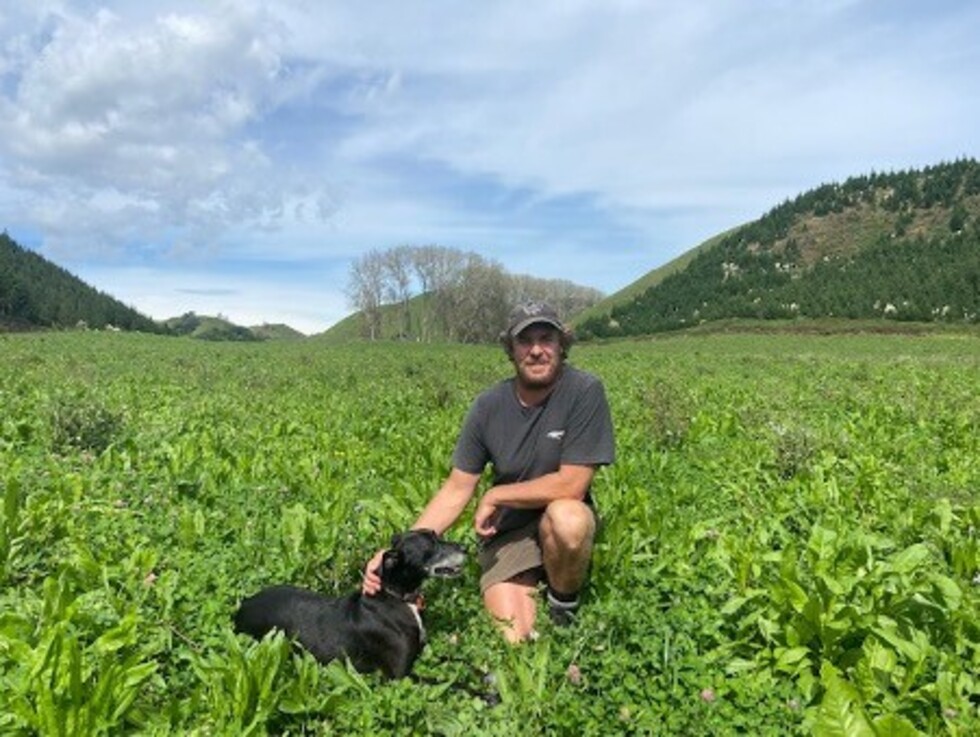James Burke, our Lighthouse Farmer.
Meet James Burke, who has been on a journey of restoring biology and biodiversity to create farm resilience.
An overview of his diversified approach:
- Low nitrogen use
- Introducing diverse species; developing resilience for summer
- 30 ha (1600 mm rainfall) and 115 ha block (2400 mm)
- 13.5 SU/ha
- EFS >$1,200 per ha from grazed areas
- Scorecard for catchment Eco Health >80%
James has been running two complementary blocks for beef finishing. This is when the cow gains its final weight before slaughter. These blocks have a mix of forestry, riparian, retired areas, and pasture. He manages several different blocks of land, totaling 120 ha.
James’ farming system relies on around 200 two-year-old Wagyu steers growing to a weight of 400 kg that are finished in the winter, leading to a low stocking rate in late winter/early spring. This results in the steers putting on around 220 kg in one season. On a 30 ha block, James buys in around 70 Rising 2-year-old white face steers.
James’ focus is on soil health and biodiversity of species above ground, as well as how this affects the biodiversity underground.
James avoids synthetic fertiliser and has transitioned the farm from a high nitrogen use, highly cultivated block, into a low nitrogen system of diversified species that are active in summer and deep rooting. Because of his hard work, the use of synthetic nitrogen on his property has diminished to none this year. For the years he was transitioning, he used chook manure, to increase the organic matter in the soil.
His main forage species are chicory, plantain, different varieties of clovers, Phalaris, fescue, perennial ryegrasses and lucerne. James transitioned to this system around four years ago, and it took around two years for the farm to respond to the new system and rejuvenate the soil structure.
The mixed species generated around 11 tonnes of dry matter in the 2019-2020 season[SH3] and is improving yearly.
James has not had to undersow since it became established. His advice is to think about planting diverse species on all the easy country to ensure there is enough to keep a consistent diet going for the animals being fed over the summer months.
In this case, James has most of the easy country of the farm planted, around 45 ha in mixed species.

Photo of sward in April 2022
Last year, with such a hot dry summer, he noted it was far more drought-tolerant than straight ryegrass, enabling him to have long rounds, high post-grazing covers, and a big thatch, which enhanced soil moisture holding capacity. The cattle were a lot more content, and he had excellent weight gains, with no animal health issues.
If you are considering this, it would be good to have all plants in before Labour weekend. These species are mainly able to be grazed in 6-8 weeks which would allow a smooth transition to summer feed.
James notes that he would not go back to ryegrass again, as it does not have the resilience in the heat during the dry seasons.
He will also said he will never go back to a monoculture. To achieve this, he plants to keep topping up these areas and, if managed well, his chicory will enter its 4th year.
The key to managing these species well is to not overgraze, have long rounds, and leave a big thatch, which will enhance the survival of the species. James believes this is a lot less stressful and makes farming more enjoyable. He does not stress about the summer dry, nor the animal wellbeing, “It gives a lot more resilience to the farm and mental resilience for me.”
James’ efficient management allows him to do some more alternative work off farm, which also adds to his enjoyment and interest in Agriculture.
To find out more, have a look at this video of James taken earlier in 2022
Watch here
Stay tuned for a field day we will be hosting at his farm in November.



